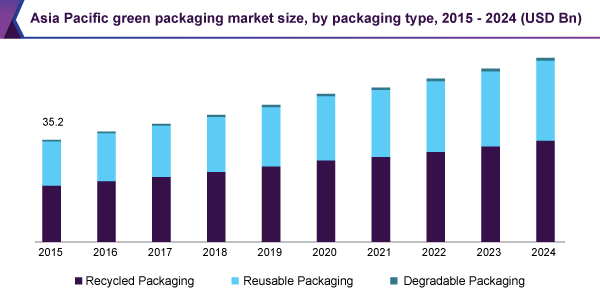In September 2020, China stated at the General Assembly of the 75th UN General Assembly:
China will scale up its Intended Nationally Determined Contributions by adopting more vigorous policies and measures. We aim to have CO2 emissions peak before 2030 and achieve carbon neutrality before 2060.
It’s a dramatic turnaround in the global environmental landscape —— in contrast to the U.S. announcement last year that it was withdrawing from the Paris Agreement. In October, Shinzo Abe announced in National Diet that Japan would achieve carbon neutrality in 2050. On the 28th of the same month, Moon Jae-in also stated that South Korea would achieve carbon neutrality in 2050. With the end of the US election, Biden made it clear that US will rejoin to the Paris Agreement. At the same time, with the impact of COVID-19 on the world, Environmental issues have been raised to unprecedented heights. Technologies such as green energy, recyclable waste, and carbon capture are all actually developing, although we know that such statements in many countries are based on political considerations. 2020 will become an important year in the environmental field. The packaging industry is no exception. In this process, the concept of Green Package is widely spread and accepted.

Standard
As early as 1987, the concept of Green Package was proposed in Our Common Future(also known as the Brundtland report) of the World Commission on Environment and Development. Many countries and regions have also begun to consider environmental factors in packaging standards ——
European Union
The European Parliament and Council Directive has detailed regulations on packaging and packaging waste in 94/62/EC of 1994/12/20. It became a formal law on 1996/6/30, and was revised to 2004/12/EC on 2004/2/11, and its main contents are as follows:
Limits on the content of heavy metal harmful substances: the total amount of lead, cadmium, mercury, and hexavalent chromium shall not exceed 0.01% (100ppm), it is worth noting that this is the basic requirement for each package, we can understand it as the minimum but not the only requirement.
Recycling target of packaging materials: reach 55%~80% by 2008/12/31, the minimum allowable amount of packaging materials recycling is 60% glass, 60% paper, 50% metal, 22.5% plastic, 15% wood. By 2010, the packaging materials will be free of heavy metals and other harmful substances.
United States
There are related regulations in the Toxics in Packaging Prevention Act of the United States. It holds the same views and technical indicators as the EU, and has a buffer on the time gradient. The total concentration of lead, cadmium, mercury and hexavalent chromium in any packaging aids shall not exceed the following regulations:
- Less than 0.06%(600ppm) of weight two years after the entry into force of this Act
- Less than 0.025%(250ppm) of weight three years after the entry into force of this Act
- Less than 0.01%(100ppm) of weight four years after the entry into force of this Act
The purpose of the bill is to reduce harm while promoting the widespread use of recycled materials in packaging and auxiliary products.
China
China’s Food Hygiene Law of the People’s Republic of China stipulates that relevant standards must be met, which includes corresponding specifications for plastics, paper, ceramics, rubber, aluminum products and other materials. It was first stipulated in GB 9683-1988 that the content of heavy metals in 4% acetic acid must be less than 1mg/L. The later GB/T 16716 is the same as ISO 18601 Packaging and the environment.
In addition, in 2019, China also launched the Method and Criteria for Green Packaging Assessment, which stipulates the evaluation method of green packaging, which is divided into four categories: resource attributes, energy attributes, environmental attributes, and product attributes. These include optimization of packaging system, addition rate of recycled materials, water consumption, energy consumption, greenhouse gas emissions, degradation performance and so on.
As the world pays more attention to the environment, the environmental protection requirements of packaging are getting higher and higher. In order to meet the requirements of packaging and the protection of the environment in various countries in the future, we should pay more attention to green packaging.
The establishment of the above standards promoted the development of the industry to a large extent. For the principle of green package, you can read our Packaging Materials Pollute & green Packaging Materials.
Market
It is generally estimated that the current green packaging market is around US$250 billion, and the compound growth rate in the next five years is around 5.5%-6.0%. The Asia-Pacific region has the fastest growth rate, and the current market share in Europe is the highest at around 37%.

There are two main factors that maintain the rapid growth of the green packaging market:
Consumers’ increasing environmental awareness
In the survey conducted by CYCAN, the vast majority of young Chinese interviewed (84%) recognized the seriousness of climate change, and even more than 40% of young Chinese considered it the most serious global problem at the moment, followed by social inequality (12.9%) and public health (8.3%), this investigation is particularly prominent in 2020 when the global epidemic is raging. 95% of the interviewees agreed that “when emitting greenhouse gases, we must consider fulfilling our own responsibilities and being responsible for the future and the next generation.” Only 31.6% of young people believe that “now you don’t have to worry about the energy problems of the next generation.”
More than 50.0% of people in South America and North America like green packaging when buying any product. In addition, 42.0% of respondents expressed their willingness to pay more for green packaging options.
The government takes the initiative to guide the market and introduce relevant laws and regulations
- In July 2019, in order to reduce the pressure on the environment, China launched a new waste sorting program. Courier companies use recyclable boxes, reduce unnecessary packaging, and use biodegradable packaging materials. According to the State Post Bureau, by the end of 2019, it is expected that 95% of delivered packages will use electronic waybills to minimize the use of paper, and this green packaging plan will save the country 207 million single-use plastics each year bag.
- The Australian government has set a goal to adopt 100% recyclable packaging at least by 2025.
- The Netherlands implements an agreement with packaging manufacturers, stipulating that no less than 65% of the packaging materials of the company can be reused, so that the packaging material resources can be recycled to the maximum extent and promote the development of green packaging in the country.
- The United States implements measures such as waste disposal fees and reuse, and vigorously develops pollution-free and easily degradable packaging materials, making the development of green packaging in the United States reach more than 80%.
These actions have led many companies to develop green packaging:
- Nestlé plans to spend up to 2 billion Swiss francs in January 2020 to convert its packaging from virgin plastic to food-grade recycled plastic.
- Coca-Cola promised to collect a can or bottle for everyone that it sells by 2025, to ensure that all its packaging is 100% recyclable, and to ensure that at least 50% of its plastic bottles are from recycled materials.
- Unilever India Co., Ltd. promised to use 100% recyclable packaging by 2025, and has transformed from commercial polymers to performance-based polymers.
- Walmart is committed to reducing the environmental impact of packaging for a long time. Its Sustainable Packaging Manual explains the principles of green packaging from the perspectives of optimized design, sustainable procurement and support for recycling.
There are many such cases, which illustrates the global trend of green packaging. Most companies will have to adopt green packaging in order to maintain an important position in the green packaging market. At the same time, people are more willing to choose green packaging products. Through effective green marketing, users can quickly improve the evaluation of your brand. There is no doubt that Green Packaging will play a very important role in the packaging field in the future. If your company fails to keep up with the development of green packaging, it is likely to be eliminated by the market.

Green Trade Barriers
Green packaging regulations refer to a relatively high and complete packaging material market access system established by developed countries, including standards for waste recycling, reuse and regeneration. It is an environmental protection measure to prevent packaging materials and packaging waste from harming the environment or damaging the health of users.
Green packaging regulations can effectively solve environmental problems and are the best way to achieve the coordinated development of packaging and the environment, It is in line with the world’s environmental protection trend. However, this type of regulation is often used by some countries as a standard for import approval to achieve the purpose of restricting imports and become Green Trade Barriers. Green Trade Barriers have become a trade barrier widely adopted by many developed countries because of its external rationality and internal concealment. If you read the content in the “Standard” of this article carefully, it is easy to realize the existence of green packaging barriers. Under the new situation in the future, we should recognize, understand and solve the problem of green packaging. If you are in a developed country, green packaging can save you from legal issues. If you are in a developing country, green packaging can help you expand your market better and gain market access from developed countries.
Green packaging has many benefits, but it will increase your production costs, but don’t worry too much. The cost of supporting green packaging is very worthwhile, it can increase the value of your brand and avoid unnecessary legal issues. At the same time, green packaging products can have a higher premium, and with the development of technology, the cost of green packaging will gradually decrease. As long as the development trend of green packaging can continue, it will eventually make it the same as the current ordinary packaging. By then, the holy grail of environmentalists —— zero emissions and 100% recycling must not be far away.
Refer:
https://sites.google.com/site/technologiesmarketnews/green-packaging-market
http://www.gov.cn/banshi/2005-08/31/content_68767.htm
https://dtsc.ca.gov/preventing-toxic-substances-in-packaging-fact-sheet/
https://eur-lex.europa.eu/legal-content/EN/ALL/?uri=CELEX%3A32004L0012
https://eur-lex.europa.eu/legal-content/EN/ALL/?uri=CELEX%3A31994L0062
https://www.iso.org/standard/55869.html
http://www.gb688.cn/bzgk/gb/newGbInfo?hcno=557A035CFE7F39A82B8ABCC7644902B4
http://www.gb688.cn/bzgk/gb/newGbInfo?hcno=052FF52B23A7B1C94B3C155528DEAD9B
https://www.ftc.gov/tips-advice/business-center/guidance/environmental-claims-summary-green-guides
https://undocs.org/en/A/42/427&referer=/english/&Lang=C
https://www.climatechangenews.com/2019/06/14/countries-net-zero-climate-goal/
https://www.bbc.com/news/science-environment-54256826
https://en.wikipedia.org/wiki/Carbon_neutrality
https://www.unenvironment.org/interactive/emissions-gap-report/2019/index.php
http://www.ftchinese.com/story/001090815
https://www.walmartsustainabilityhub.com/